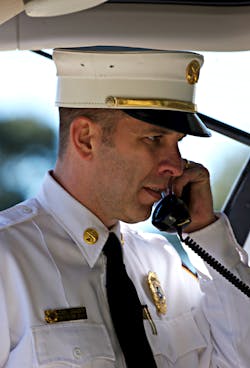The phrase or saying “It’s Worth the Risk” should not in any way be controversial for those who took the oath of a firefighter. The public believes that it is “a given” that firefighters are willing to take risks to save them. It’s this assumption that leads the public to put firefighters on a pedestal above others. Firefighters are perceived as willing to take risks in order to protect and save the public when necessary.
I wear a wristband that says “It’s Worth the Risk” 24 hours a day, 7 days per week. When a civilian inquires what “It’s Worth the Risk” means, my standard response is, “It means that it’s worth the risk for me, us, the fire service to risk our lives to save theirs.”
I do not go into the details of training and the definition of “It’s Worth the Risk.” I do not go into details about calculations on the fireground. I do not go into details about all that is taken into consideration regarding the training that some firefighters go through. Nor do I share the secret that not all who wear the badge truly believe “It’s Worth the Risk.”
Worth, as defined in the Oxford Dictionary, is the equivalent to that of someone or something under consideration; the level at which someone or something deserves to be valued or rated. I have always considered my fellow man, whom I have sworn to protect in time of need, being worthy of a high level of risk. I manage that risk through a career of learning and evaluating continually; wanting to be more than minimum at firefighting. We should value the public’s worth in how we prepare for the next call and the risk we will potentially take.
Risk is defined as an action that holds a chance of danger and failure. Risk is also the ability to provide a huge return from taking that risk. This risk can be managed with proper training and experienced time-compressed decision making.
We need to look deep into the data as to what the risk really is or is not. The data backs up the fact that firefighter injury and LODD numbers are low in comparison to the number of fires that are fought daily without incident. There are numerous heroic rescues made daily around this great country. As I write this, once again lives were saved when the St. Louis Fire Department conducted an aggressive attack on what was supposedly a vacant structure. The building is not vacant until we say its vacant. Once again, the fire service made multiple grabs of kids that were left home alone. Imagine if St. Louis took the stance to only go interior or search when all signs led to entrapment.
Another issue is experience. “It’s Worth the Risk” to fight most fires aggressively for the combat experience that is gained so we will be able to rise to the occasion when all odds are against us and the risks are higher. These higher risks will be managed by our experience and preparation.
Aggressive does not mean unsafe. With solid training, the risk is truly reduced to a manageable level. Bringing back realistic and practical live fire training is needed because experience matters, and unfortunately, sometimes no matter how right we do this job, things can still go wrong. It has always been said that you can never train too much for a job that can kill you. Those words are very poignant, yet many firehouses have adopted a culture of training less and complaining more about those who do take training as if someone’s life could depend on that training. Stop worrying about what others are saying, and let’s get back to the job of taking back our fire service. Get out of the recliner, get motivated and a make difference! Our investment, our preparation and our mental thought process decides whether people live or die.
We must recapture the primary mission of the fire service based on the very foundation of what has defined the fire service for decades—building an undeniable trust from the public. We must push for a greater fire service that puts the lives of citizens first, but that also means that firefighters’ lives and property still count. “It’s Worth the Risk” is not just about aggressive interior firefighting; it is also about standing strong against all odds to create better and more effective firefighters by putting yourself out there. Stay true to yourself, stay true to the mission and stay true to the job.
It’s Worth The Risk!
About the Author

Curt Isakson
Curt “Ike” Isakson is a 30-plus-year veteran of the fire service. He worked for Escambia County, FL, Fire Rescue for 25 years. Isakson previously worked nine years for the Pensacola, FL, Fire Department, where he was assigned as a company officer on Heavy Rescue 31. His fire service experience started at a young age as a junior firefighter with the Midway, FL, Fire District; he rose through the ranks to captain. Isakson's identification of the need for a series of special-interest fire conferences spawned the development of County Fire Tactics, which covers officer development, command officers, water on fire, high-rise operations, and leadership and tactics.
